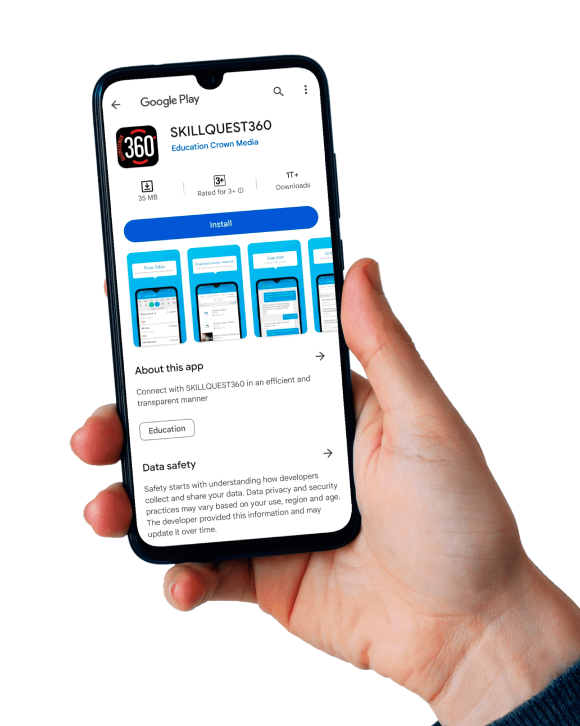In the dynamic landscape of today’s business world, the ability to adapt and evolve is paramount for organizational success. One of the key drivers of this adaptability is the integration of continuous learning into corporate culture. This blog explores the profound significance of ongoing training and skill development for employees and its far-reaching impact on organizational effectiveness.
Continuous learning is more than just a buzzword; it’s a strategic imperative for businesses aiming to thrive in a competitive environment. Embracing a culture of continuous learning empowers employees to unlock their full potential, fostering a workforce that is not only capable but also eager to take on new challenges.
1. Enhanced Employee Engagement:
Engaged employees are the heartbeat of a successful organization. Continuous learning opportunities demonstrate a company’s commitment to employee growth and development. When individuals feel invested in, they reciprocate with increased engagement, enthusiasm, and a sense of loyalty to the organization.
2. Adaptability to Change:
The business landscape is characterized by constant change. Organizations that prioritize continuous learning create a workforce that is adaptable and resilient. Employees equipped with up-to-date skills and knowledge can navigate change with confidence, ensuring the organization remains agile and responsive to evolving market dynamics.
Impact on Organizational Effectiveness
1. Elevated Performance Levels:
Continuous learning directly correlates with improved performance. As employees acquire new skills and deepen their knowledge, their ability to contribute meaningfully to organizational goals increases. This, in turn, leads to higher productivity levels and overall efficiency.
2. Innovation and Creativity:
A culture of continuous learning fosters an environment where innovation and creativity flourish. Employees exposed to diverse learning experiences are more likely to think outside the box, propose innovative solutions, and contribute fresh ideas that drive the organization forward.
3. Talent Retention and Attraction:
In today’s competitive job market, attracting and retaining top talent is a strategic imperative. Organizations that prioritize continuous learning send a powerful message to current and potential employees. The opportunity for ongoing development is a significant factor in talent acquisition and retention strategies.
Implementing a Successful Continuous Learning Culture
1. Customized Training Programs:
Tailor training programs to meet the specific needs of employees and align them with organizational objectives. Customization ensures that learning experiences are relevant, engaging, and directly applicable to individual roles.
2. Encourage a Growth Mindset:
Foster a culture of continuous improvement by encouraging a growth mindset. Emphasize that learning is a lifelong journey, and mistakes are opportunities for growth. This mindset shift creates a positive atmosphere where employees are more willing to embrace new challenges.
3. Utilize Technology for Learning:
Leverage technological advancements to make learning accessible and flexible. Online courses, webinars, and e-learning platforms provide employees with the flexibility to learn at their own pace, fostering a culture of self-directed learning.
Overall, the integration of continuous learning into corporate culture is a catalyst for organizational growth and success. It empowers employees, enhances organizational effectiveness, and positions the company as an employer of choice in a competitive market. As businesses navigate the complexities of the modern world, the commitment to continuous learning becomes not just a strategy but a defining element of a thriving corporate culture.
#1: Building High-Performance Teams in Your Organization
Understanding the Foundation: Team-Building Techniques
1. Define Clear Goals and Objectives:
Effective team-building starts with a clear understanding of organizational goals. Set specific, measurable, achievable, relevant, and time-bound (SMART) objectives. This provides a roadmap for the team and aligns individual efforts with the overall mission.
2. Foster Open Communication:
Encourage transparent communication within the team. Establish open channels for feedback, suggestions, and concerns. A culture of open communication builds trust, which is crucial for high-performance teams.
3. Diversity and Inclusion:
Embrace diversity in your team. Diverse teams bring varied perspectives and ideas, fostering creativity and innovation. Ensure an inclusive environment where every team member feels valued and heard.
4. Team-Building Activities:
Invest in team-building activities that promote collaboration and camaraderie. Whether it’s a workshop, offsite retreat, or a simple team lunch, such activities strengthen bonds and create a positive team culture.
Leadership Strategies for High-Performance
1. Lead by Example:
Effective leaders set the standard for performance. Demonstrate the values and work ethic you expect from your team. This not only inspires but also establishes a culture of accountability.
2. Empower and Trust Your Team:
Empower your team members by trusting them with responsibilities. Provide autonomy and let them take ownership of their work. This fosters a sense of accountability and boosts confidence.
3. Encourage Collaboration:
Break down silos and encourage cross-functional collaboration. High-performance teams thrive on collective intelligence, where diverse skills and perspectives come together to solve complex problems.
4. Continuous Learning and Development:
Invest in the professional development of your team. Provide opportunities for training and upskilling. A culture of continuous learning ensures that the team stays ahead of industry trends and remains adaptable.
Coaching Approaches for Sustained Success
1. Individualized Coaching:
Recognize that each team member has unique strengths and areas for improvement. Tailor coaching approaches to individual needs, fostering personal and professional growth.
2. Regular Feedback:
Provide constructive feedback regularly. Celebrate successes and address challenges promptly. Feedback should be specific, actionable, and focused on continuous improvement.
3. Conflict Resolution Skills:
Equip leaders and team members with effective conflict resolution skills. Addressing conflicts promptly and constructively prevents issues from escalating and disrupting team dynamics.
4. Promote a Growth Mindset:
Foster a culture of continuous improvement and a growth mindset. Encourage team members to embrace challenges, learn from failures, and see effort as a path to mastery.
Overall, building high-performance teams requires a holistic approach that combines effective team-building techniques, strong leadership strategies, and thoughtful coaching approaches. By focusing on clear communication, embracing diversity, empowering team members, and fostering a culture of continuous learning, organizations can unlock the full potential of their teams. Invest in these practices, and you’ll find that building high-performance teams is not just a goal—it’s the cornerstone of organizational success.

